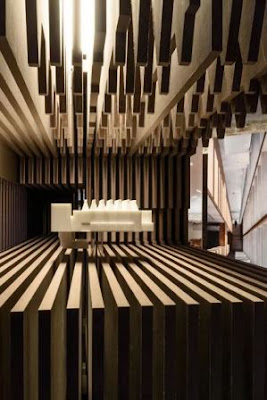The dream of space produces forms : Paredes Pedrosa arquitectos / [editors, Paredes Pedrosa arquitectos].
[Madrid] : Ministerio de Fomento, D.L. 2019.
111 p. : il.
/ EN / Libros / Arquitectura – Siglo XXI – España / Exposiciones – Construcciones / Paredes Pedrosa Arquitectos
📘 Ed. impresa
Cita APA-7: Paredes Pedrosa Arquitectos (eds.). (2019). The dream of space produces forms : Paredes Pedrosa arquitectos. Ministerio de Fomento.
ehuBiblioteka BCG A-725.91 DRE
https://ehu.on.worldcat.org/v2/oclc/1127418759
[Madrid] : Ministerio de Fomento, D.L. 2019.
111 p. : il.
/ EN / Libros / Arquitectura – Siglo XXI – España / Exposiciones – Construcciones / Paredes Pedrosa Arquitectos
📘 Ed. impresa
Cita APA-7: Paredes Pedrosa Arquitectos (eds.). (2019). The dream of space produces forms : Paredes Pedrosa arquitectos. Ministerio de Fomento.
ehuBiblioteka BCG A-725.91 DRE
https://ehu.on.worldcat.org/v2/oclc/1127418759
[.en] “The dream of space produces forms” is a study on space as the place that most surprises and excites us in architecture. Space understood as an invention of three-dimensional shapes that particularly show their ability to provide above justified needs, the possibility of revising the way they are used. By abstracting these spaces from their environment and context, we seek through this study to explore the relationship between the section and the volume of the space, and in doing so, recognize the design mechanisms, whether rational or intuitive, that we have used in establishing the spatial layout. We are aware that this thought on the actual project experience must be part of the architect´s work, and that it ultimately represents the search for the givens and constants that are present in the architecture of any time or place.
[.es] El libro "The dream of space produces forms" recoge la exposición de Paredes/Pedrosa para la Biennale di Venezia – 16 Mostra Internazionale di Architettura FREESPACE. Los arquitectos respondieron al tema de FREESPACE centrándose en la sección, la herramienta arquitectónica que explora la forma espacial, la altura y la profundidad del volumen a crear, que en sus palabras es "estar ocupado por la luz, por el tiempo o por el sonido, herramientas de diseño clave en nuestra práctica diaria". En la introducción del libro, historiador y crítico de arquitectura Richard Ingersoll destaca la capacidad de los autores para adaptarse a cada contexto al que se enfrentan: “Paredes/Pedrosa han desarrollado un método para escuchar el sitio, al tiempo que prestan detallada atención al programa, la historia o las tecnologías apropiadas. En la exposición presentaban seis obras que demuestran esta capacidad de conectar con el lugar: la Biblioteca de Córdoba, la Villa romana de La Olmeda, el Museo Arqueológico de Almería, el nuevo Auditorio de Lugo, la Biblioteca Pública de Ceuta. Seis módulos de 3,75 m donde se representan en secciones sucesivas de tableros de madera los espacios interiores de los seis edificios a escala 1:30; y en cada módulo flota una maqueta a escala 1:200; piezas que adquieren la categoría de esculturas en la nave del Arsenal.
[.es] El libro "The dream of space produces forms" recoge la exposición de Paredes/Pedrosa para la Biennale di Venezia – 16 Mostra Internazionale di Architettura FREESPACE. Los arquitectos respondieron al tema de FREESPACE centrándose en la sección, la herramienta arquitectónica que explora la forma espacial, la altura y la profundidad del volumen a crear, que en sus palabras es "estar ocupado por la luz, por el tiempo o por el sonido, herramientas de diseño clave en nuestra práctica diaria". En la introducción del libro, historiador y crítico de arquitectura Richard Ingersoll destaca la capacidad de los autores para adaptarse a cada contexto al que se enfrentan: “Paredes/Pedrosa han desarrollado un método para escuchar el sitio, al tiempo que prestan detallada atención al programa, la historia o las tecnologías apropiadas. En la exposición presentaban seis obras que demuestran esta capacidad de conectar con el lugar: la Biblioteca de Córdoba, la Villa romana de La Olmeda, el Museo Arqueológico de Almería, el nuevo Auditorio de Lugo, la Biblioteca Pública de Ceuta. Seis módulos de 3,75 m donde se representan en secciones sucesivas de tableros de madera los espacios interiores de los seis edificios a escala 1:30; y en cada módulo flota una maqueta a escala 1:200; piezas que adquieren la categoría de esculturas en la nave del Arsenal.

No hay comentarios:
Publicar un comentario